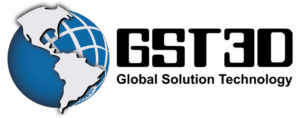⚖️ Advanced GST3D Filament Calibration Guide
🔧1. Recommended Print Parameters
Based on the GST3D 48kg filament pack, these are the optimal temperature ranges for each material:
| Filament Type | Nozzle Temperature | Bed Temperature | Cooling Fan |
|---|---|---|---|
| PLA+ | 180°C - 220°C | 40°C - 60°C | 100% |
| PETG | 230°C - 240°C | 70°C - 80°C | 30% - 50% |
| ABS | 230°C - 250°C | 90°C - 110°C | 0% (enclosure recommended) |
Tip: Always start with the lowest temperature and increase gradually to find the best layer quality and adhesion.
🧪2. Essential Calibration Tests
- Temperature Tower: Print a tower with 5°C increments. Observe which section has the best surface finish and bridging.
- Flow Calibration: Use a flow test tower (e.g., 85% to 115%) and measure wall thickness to adjust extrusion multiplier.
- Retraction Test: Print models that induce stringing and tweak retraction distance and speed accordingly.
- Speed Test: Evaluate print quality and efficiency at different speeds to find the ideal compromise.
- Tolerance Test: Calibrate XY dimensional accuracy using press-fit or clearance fit models.
Why calibrate? Proper calibration helps avoid warping, stringing, poor layer adhesion, dimensional errors, and ensures reliable results across all projects.
🌡️3. Environmental Settings and Best Practices
- PLA / PLA+: Fan 100%, bed 40°C - 60°C, store in a dry place.
- PETG: Fan 30% - 50%, bed 70°C - 80°C, avoid drafts during printing.
- ABS: Nozzle 230°C - 250°C, bed 90°C - 110°C, use an enclosure to avoid warping.
- Humidity: Store filament in sealed bags with silica gel to avoid moisture issues.
Tip: If your filament crackles while printing, it has absorbed moisture. Dry it before use for best results.
❓4. Frequently Asked Questions (FAQ)
- Why is it important to calibrate temperature?
- It improves print quality, enhances layer bonding, and prevents defects like stringing or warping.
- What if I notice stringing?
- Reduce nozzle temperature by 5°C or fine-tune retraction settings (distance/speed).
- How often should I calibrate?
- Each time you change filament, nozzle, or perform maintenance on your printer.
- What if my printed parts are dimensionally inaccurate?
- Run a tolerance test and adjust flow rate or X/Y steps accordingly.
- How can I avoid warping?
- Use a heated bed, ensure good first-layer adhesion, and for ABS use a closed printing chamber.
⬇️5. Downloadable Calibration Models
Need help? Search YouTube for tutorials or contact our support team directly.


